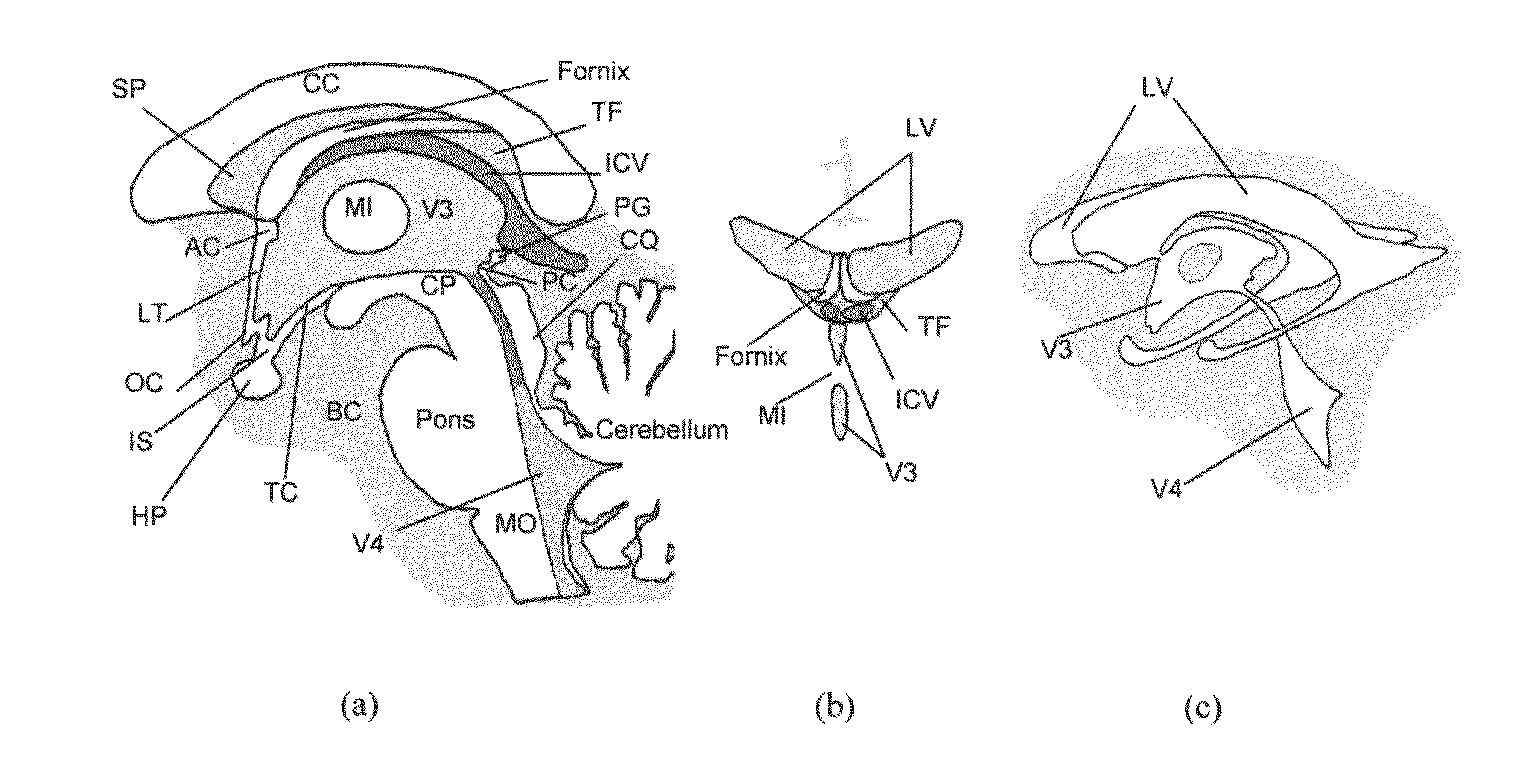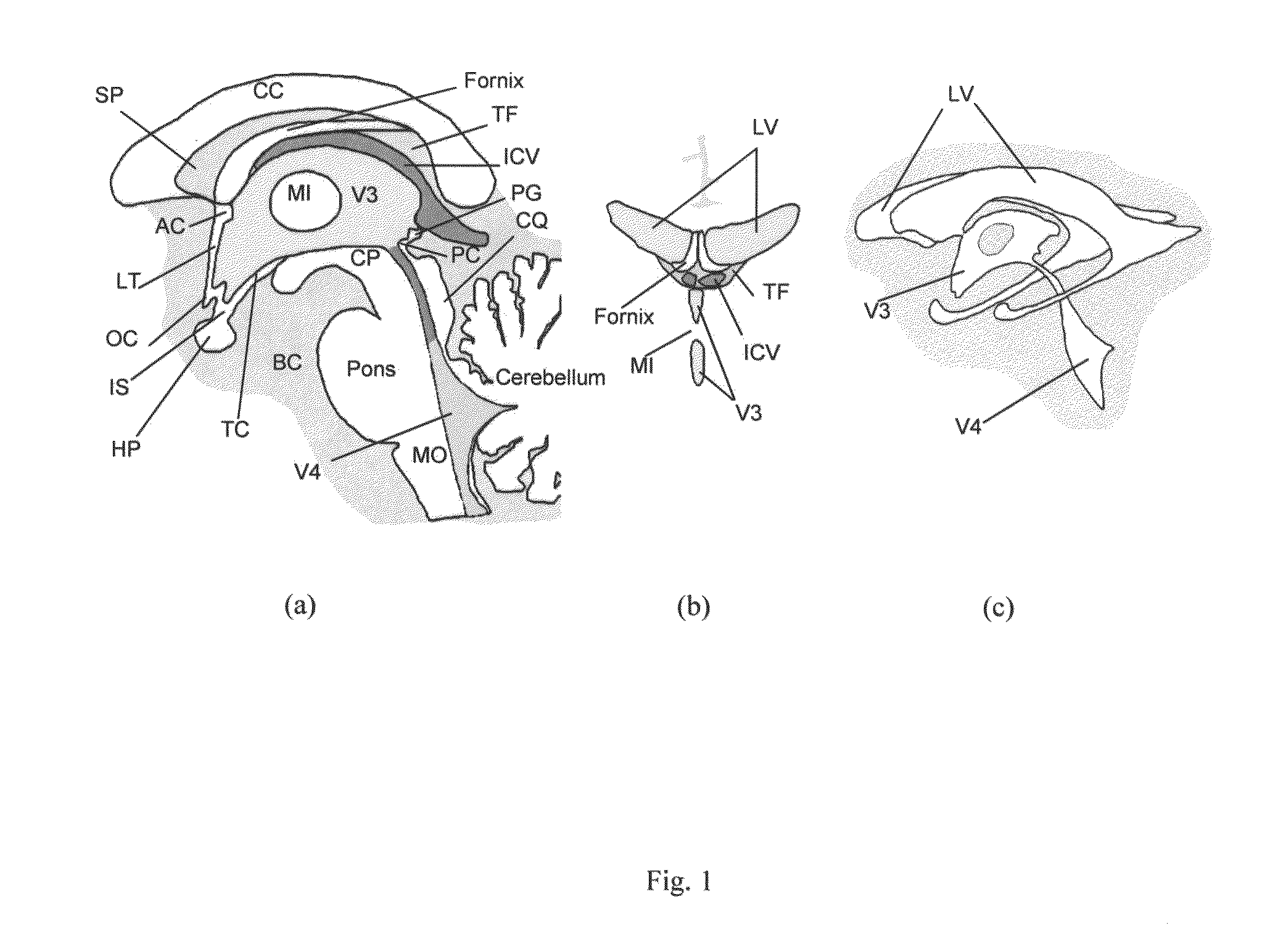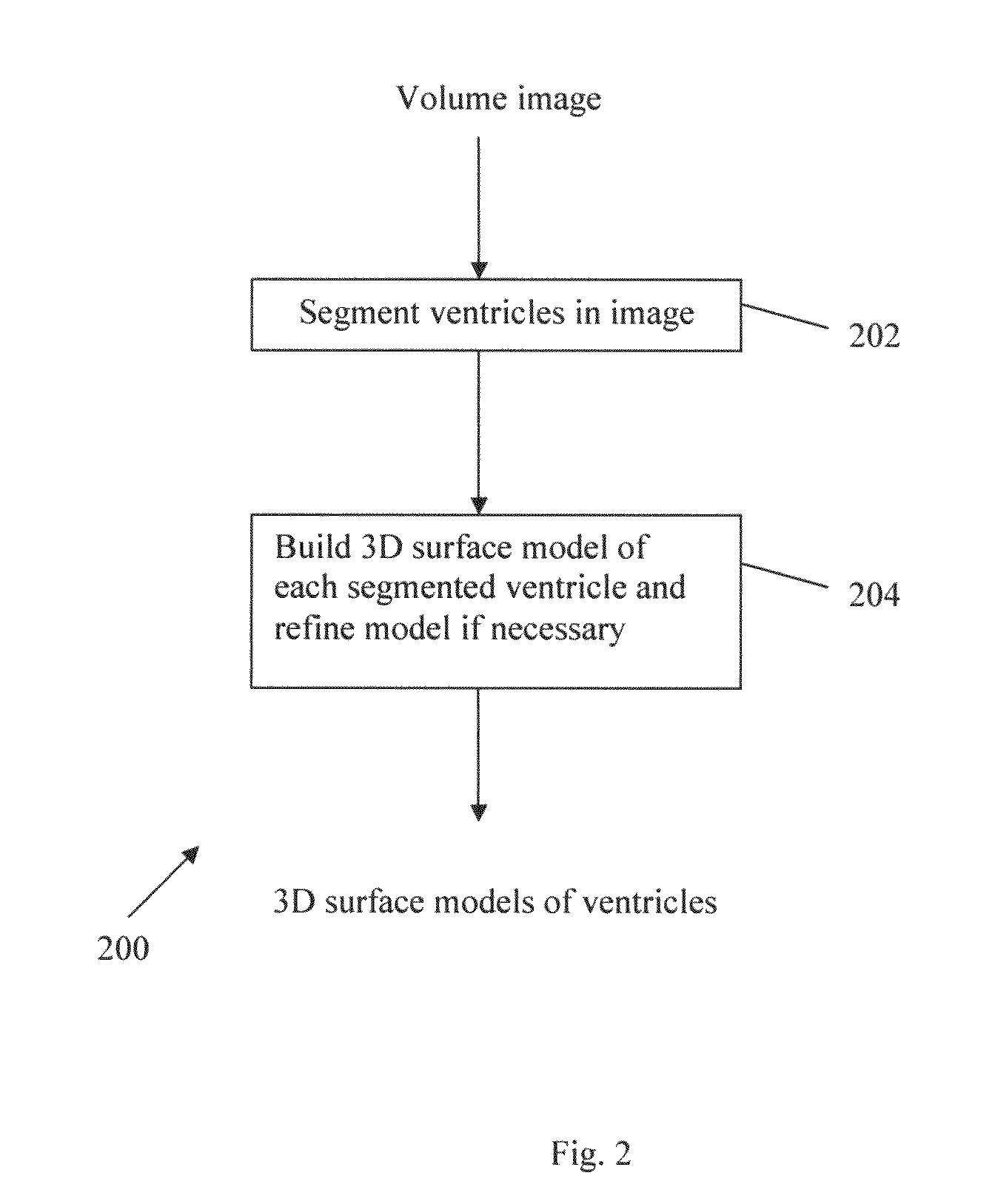Method and system for anatomy structure segmentation and modeling in an image
a technology of anatomy structure and image, applied in image analysis, image enhancement, instruments, etc., can solve the problems of difficult segmentation of the third ventricle, ventricular region may be left out by these methods, and ventricular region may be left out, etc., to achieve accurate description of features and details.
- Summary
- Abstract
- Description
- Claims
- Application Information
AI Technical Summary
Benefits of technology
Problems solved by technology
Method used
Image
Examples
example embodiments
ADVANTAGES OF EXAMPLE EMBODIMENTS
[0099]A volumetric deformable model is used in step 202 as domain knowledge to automatically define a region of interest for the segmentation of the structure to be studied, for example the ventricular structure in the example embodiments. A proper ROI is critical for an accurate segmentation. If the ROI is too small, it may not contain the structure to be studied. On the other hand, if the ROI is too large, it may contain too much unrelated information leading to wrong segmentation. In step 202, the model is first deformed to roughly fit its corresponding structure in the image by a 3D point landmark-based warping approach and the ROI is then defined by expanding (or dilating) the deformed model. The resulting ROI takes the prior shape of the structure to be studied and hence, the amount of unrelated information in the ROI is minimized. Therefore, step 202 is robust to noise and to large shape and size variations.
[0100]Furthermore, a hysteretic thre...
PUM
 Login to View More
Login to View More Abstract
Description
Claims
Application Information
 Login to View More
Login to View More - R&D
- Intellectual Property
- Life Sciences
- Materials
- Tech Scout
- Unparalleled Data Quality
- Higher Quality Content
- 60% Fewer Hallucinations
Browse by: Latest US Patents, China's latest patents, Technical Efficacy Thesaurus, Application Domain, Technology Topic, Popular Technical Reports.
© 2025 PatSnap. All rights reserved.Legal|Privacy policy|Modern Slavery Act Transparency Statement|Sitemap|About US| Contact US: help@patsnap.com



